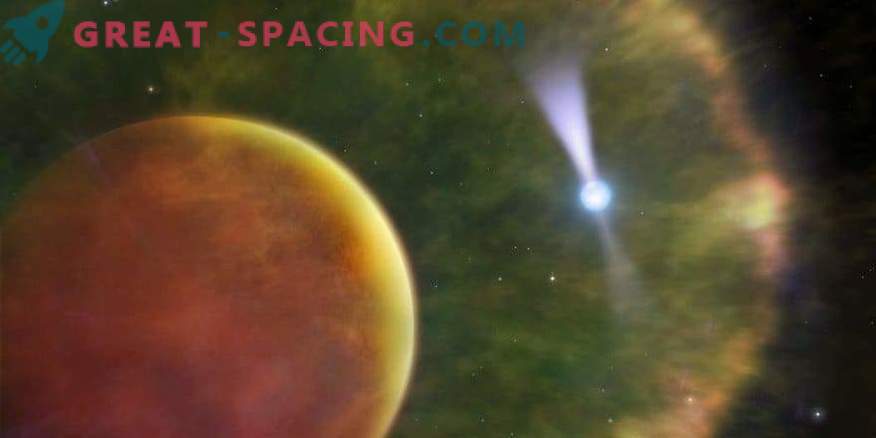
The pulsar PSR B1957 + 20 is seen in the background through a gas cloud covering its neighbor, a brown dwarf
The researchers were able to conduct observations with the highest resolution in astronomical history. The survey included two intense radiation regions, which are distant 20 km around a star living at a distance of 6500 light years from us.
This was made possible thanks to the rare geometry and characteristics of a pair of stars orbiting around each other. One of them is a cold and light brown dwarf with a comet gas tail. The second is an exotic, rapidly spinning star called a pulsar.
The gas is located in front of the pulsar and acts as a magnifying glass. A pulsar is a neutron star with a fast rotational speed (more than 600 times per second). In the process of rotation, the object releases radiation from two hot spots on the surface.
A brown dwarf star in diameter occupies about 1/3 of the solar index. Located 2 million km from the pulsar and spends 9 hours on an orbital flight. The dwarf is always turned to the pulsar with one side, repeating the Earth-Moon situation. Due to its proximity to the pulsar, the brown dwarf receives a huge dose of radiation. One side heats up to 6000 ° C. An explosion from a pulsar can eventually lead to the death of a star. Usually, pulsars in such systems are called “black widows”, because under certain conditions, he can gradually pull the gas out of a star and destroy it completely.
This detection is especially valuable because the natural lens makes it possible to better study fast radio bursts (FRB). The properties of the amplified pulses found display a significant similarity with the FRB bursts.
The pulsar is referred to as PSR B1957 + 20. Previous studies have called it one of the most massive pulsars. New work with an accurate measurement of mass will help to understand how matter behaves in the greatest densities.











































